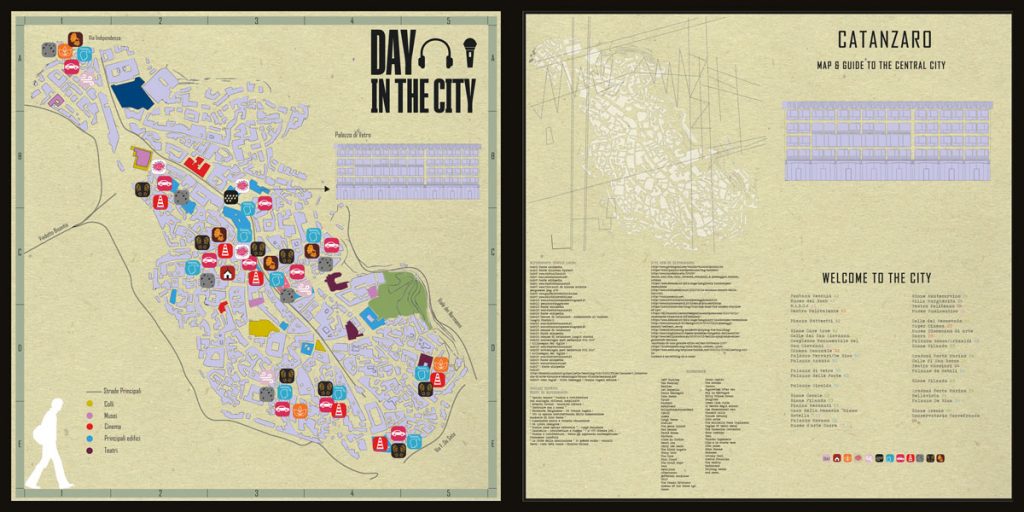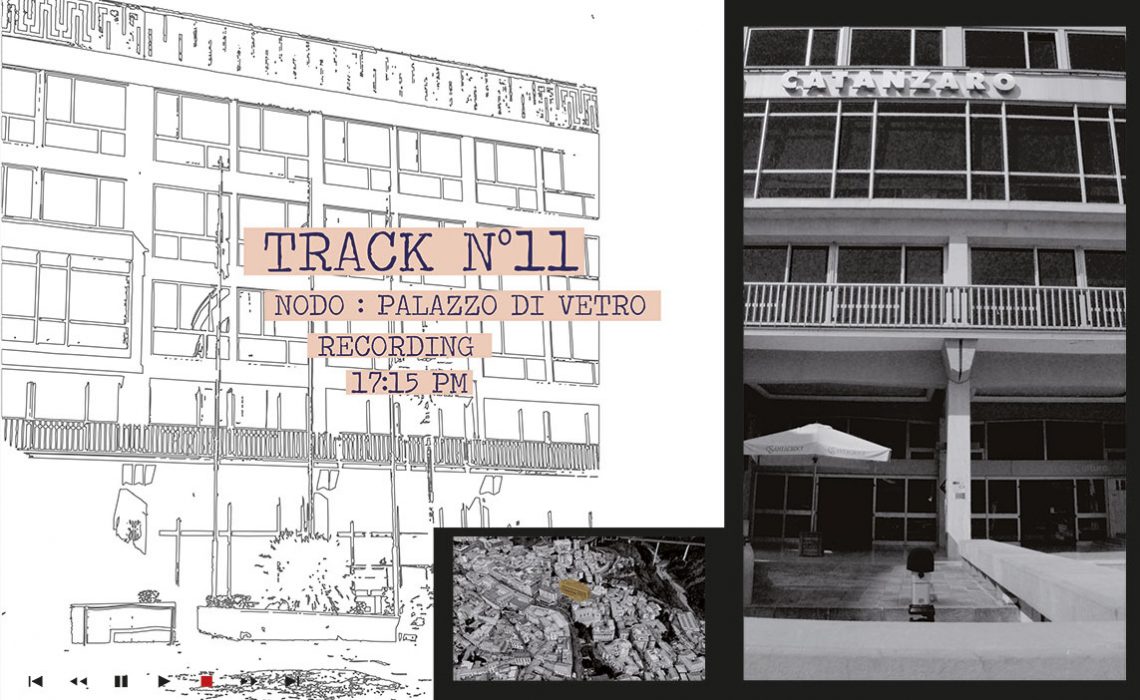
Is it possible to live music? And if we are already doing it without knowing? Do cities play? If so, what would a city sound like? What image has a sound environment?
Sound perspectives and intersections
“Tell me since you are so sensitive to the effects of architecture, have you not noticed in walking, in walking about this city, that among the buildings with which it is peopled, certain are mute, others speak, and others, finally – and they are the most rare – sing?”
(Paul Valery – Eupalinos or the architect)
Facing the theme that links architecture to music and the related relationships between them was not easy, being able to distinguish the sounds, the noises, the voices and the silences of space; the spaces dedicated to music that have acquired new forms with the advent of technology; the diffusion in space conceived as a function of the reverberation of the diffusion and combination of sounds with the environment and when it is architecture that invades the space of music as an idea, a structure, regulating its forms and contents.
Many musicians have decided to experimentally approach music, just naming a few: Ezio Bosso, multidisciplinary artist, supporter of emphatic music and synesthesia; Luigi Nono, with the application of spatialized sound, proposes the listening as a theme for living; Raymond Murray Schafer father of soundscapes and David Byrne leader of the Talking Heads who studies the benefits and the evolutions that architecture can provide to music.

Study schedule taken from the text by Roberto Favaro “Sonic space – Music and architecture among analogies, echoes and complicity” starting point of my studies.
Mashup City – play
Mixing: introduction to experimentation and choice of representative language.
Catanzaro as a field of application, moving in a place that is known but approaching in a different way, sketch of the “Mural” by Mimmo Rotella, to push in search of a new communication and an “Unconventional” map for representation, reading and approach.

Key word: hear – listen; Immaginary landscape; Sense of place; Sound Walk; Sonic space and perceived space.
Movie in the city – pause
Kevin Lynch, an American urbanist and architect in his most famous book “The image of the city” tells about how people perceive urban space through schemes and elements that can be traced back to the following categories: “Path, Margins, Districts, Nodes and References” and creating through these very precise mental maps.
This criterion was applied to the historic center of Catanzaro, divided into References represented by the three hills that rise on the rocky spur called Trivonà: in the oldest Districts or Neighborhood, those with a clear and specific identity, with different urban and morphological characteristics; the Nodes, that is the historical monuments, cinemas, theaters, museums, all those buildings symbols of history and cultural activities; and in the end Paths, the main roads and the ideal ones created from the intersection among various Nodes.

The image of the city according to my point of view
P:WAKE – pause
Play: Walk Action Keep Earl
Start: Walk – Act – keep listening
A series of maps that represent the various types of paths generated by the intersection of the District and the various Nodes, the idea is that the journeys can represent a sound walk.

Among all was chosen the one born from the neighborhoods and the Palace of Glass created by Saul Greco and the seat of the current provincial administration, a contemporary building with respect to the context and which on a visual level suggested a certain musicality.
L:SONG – pause
Landscape: Study Object Noise Guide
Landscape: Study of objects driven by noise
Methodology of study of the soundscape (with Schafferian criteria at times), recordings made in the various districts during the “saturated” time slot of the sound field lasting 6 minutes, descriptive legend, composed of the various types of sounds received, the volume and the type of perception (distant, close, closed and open sounds) no scientific approach, “only” listening and description.

Recording with the ZOOM Q3HD microphone – PHOTO: NIKON D80. Analysis of the sounds cataloged through the typology, the signal and the psychoacoustic perception.
Application on site – REC
Methods of intervention according to some steps: Description of the district – Listening to recordings – Sound mapping – Graphic representation of frequencies – and gradual composition of the chosen route – Photographs intentionally “Muffled” in contrast to a “Pop” color palette. The microphone was placed in strategic points, in transit, in squares or streets.
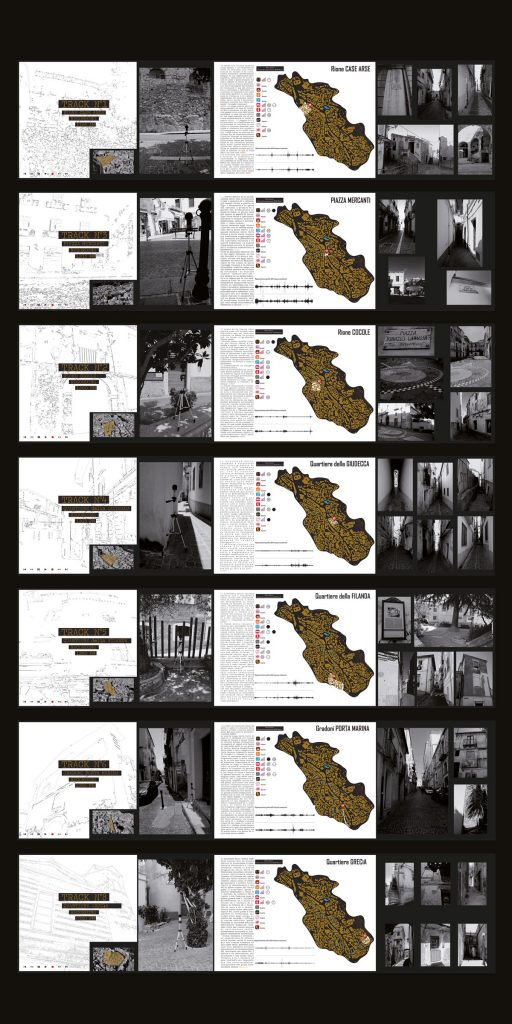
Field application of sound mapping
Switch
Switch: switch that changes the course of work. From the study of the soundscape we move on to the one of building – node (Glass Palace), the link and instrument for a new reading.

B:RIME
Building: Revolutional Inside Music Emotional
Building: Deep revolution emotional music.
Summary map with sound icons and representation of the prospectus
“Have you never tried it when you attended some solemn feast or attended a banquet, and the orchestra flooded the hall with sounds and ghosts? Didn’t it seem to you that primitive space was replaced by a concrete and changeable space, or rather that time surrounded you on every side? You then lived in a mobile edifice, at every new moment, which rebuilt itself to be consecrated entirely to the transformations of a soul: the soul of extension.”
(Paul Valery – Eupalinos or the architect)
Informal sheet music: Musical analysis of the prospectus, it is possible to visualize the type of sound chosen to compose the façade, the number of beats, the rhythmic scanning, the variations and the movements of all the elements that make up the façade.
Listening and looking: The prospect is upset, it is filled with sound and is invested with a new image that sounds. Architecture is heard and sound is seen.
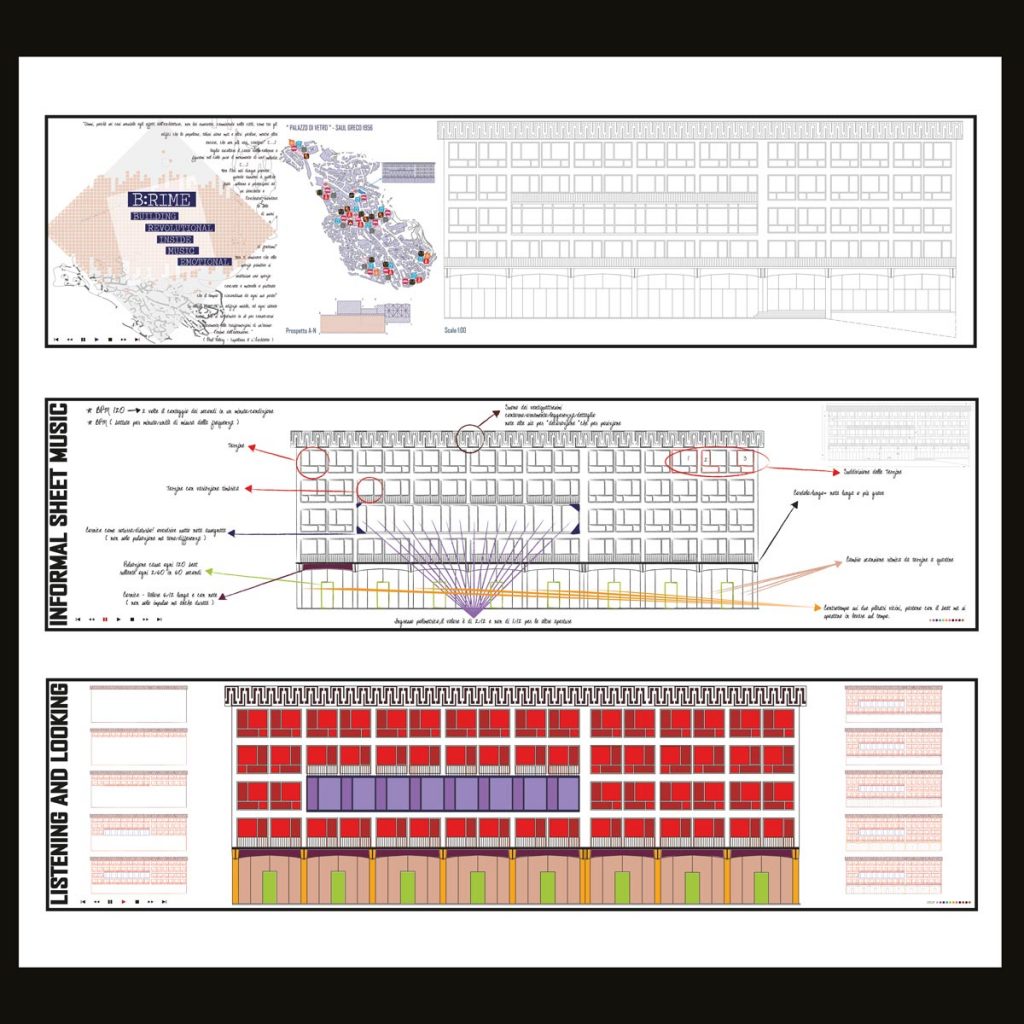
The musical reading and the transposition in a sound language was possible thanks to the intervention of the Architect and Musician Giuseppe Emanuele Costa (Yosonu)
All the sound material was created thanks to the intervention of the architect and musician Giuseppe Emanuele Costa – Yosonu
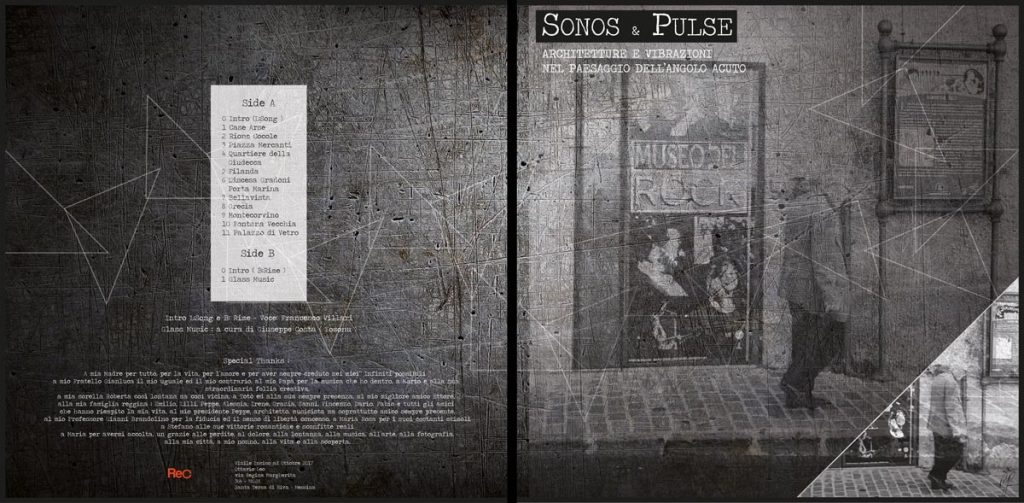
Side A: with Intro taken from Monica Vitti’s Monologue in the film the “Notte” voice: Francesco Villari – ward recordings; Side B: with intro taken from the book by Paul Valery “Eupalinos o l’architetto” voice Francesco Villari – Glass Music sound prospectus
SOUND MATERIAL
SIDE A
- Intro
- Case Arse
- Rione Cocole
- Piazza Mercanti
- Quartiere della Giudecca
- Filanda
- Discesa gradoni
- Porta MarinaBellavista
- Grecia
- Montecorvino
- Fontana Vecchia
- Palazzo di Vetro
SIDE B
- Intro
- Glass Music
